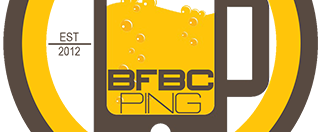 The perfect pour? Possibly. The beer came out and produced just enough of a head to get to the top of the glass and not spill over. As it recedes, it leaves a large lump of bubbles in the center and tons of lacing on the sides. The central white specks you see in the picture are not just because I'm not a good photographer - they are very large bits that gather toward the bottom of the glass, eventually. The aroma is more bread dough than anything, but I can make out some citrus on the edges.
The perfect pour? Possibly. The beer came out and produced just enough of a head to get to the top of the glass and not spill over. As it recedes, it leaves a large lump of bubbles in the center and tons of lacing on the sides. The central white specks you see in the picture are not just because I'm not a good photographer - they are very large bits that gather toward the bottom of the glass, eventually. The aroma is more bread dough than anything, but I can make out some citrus on the edges.First sip is pretty rough. It's got a lot of bitter mixed with tropical fruits and augmented with citrus, but the bread malt is sticky without adding sweetness. The result is not the impression of a complex beer that just doesn't work as a sip - it's a sip that just doesn't work as a beer. So... no, I wouldn't sip this one. Let's try out the swig.
Tip-in is moderate carbonation atop bread malt soaked in mango and grapefruit. The middle swells with the carbonation stinging like little nettles on the top of the mouth while the bread malt smooths out and lays the base for a the fruits that now mellow and get joined by grapes and oranges; it's nice and gentle under the ruckus of the carbonation. The finish is a sudden jolt of carbonation with sharp bitterness and fruit rinds.
Bottom Line: Far too unbalanced to be good, but it has a charm to it.
2.25/5



